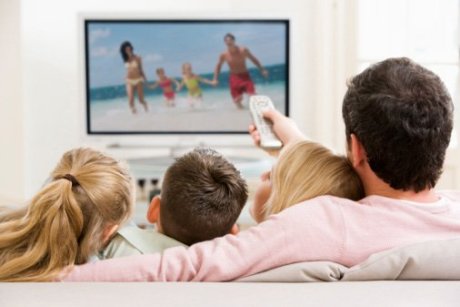Australia hasn’t yet reached the “Golden Age” of quality TV like America has, but the uptake of video-on-demand services and willingness of these services to produce local content could be changing that, writes Luke Buckmaster.
In recent years the words “Golden Age” have become synonymous with American television, virtually de rigueur in conversations about a crop of water cooler shows critics tend to fawn over and audiences tend to regard with near religious fervour.
You know the ones: titles such as Mad Men, House of Cards, Game of Thrones, Girls, Fargo, The Walking Dead and True Detective.
Early examples in this new glut from the not-so-idiot box date back to The Sopranos (which premiered in 1999) and The Wire (which premiered in 2002). The inevitable question, repeated more times than Walter White cooked up crystal meth or Frank Underwood crushed a political opponent, is when American TV’s new Golden Age will end. But for Australian-made television, it is surely time to ask when ours will begin – and why we haven’t experienced one yet.
The answers have nothing to do with lack of talent or resources. Australian film and TV crews are among the best in the world, more than capable of making high-end programs with production values comparable to American shows with much larger budgets. Nor do they have much to do with a lack in audience size.
Australians on average are among the biggest consumers of TV in the world, local viewers demonstrating considerably more devotion to Australian-made TV than Australian-made cinema. Take the first episode of the Seven Network’s two-part drama Catching Milat, which aired in May. It rated more than 2.2 million viewers nationally – an astonishing number in a population of about 24 million.
If every one of those viewers bought a ticket to see it at a cinema, Catching Milat would be right up there with the most successful Australian films of all time.
The ABC’s supernatural six-part drama Glitch performed well on iview, clocking up more than one million views. Australian TV has several longstanding, high-rating dramatic productions – the second season of ABC’s Miss Fisher’s Murder Mysteries, for example, averaged 1.5 million viewers.
In other words: there’s an audience here and they are ready to watch good TV. The problem is that they are also prepared to watch TV that is not, shall we say, good – or at least the kind one might associate with labels such as “Golden Age”. The roasted rumps, home renovations and lounge room popularity contests part and parcel with reality TV do not a television renaissance make.
It’s not as if shows like MasterChef, The Apprentice and Big Brother don’t exist in America; many consider the place their spiritual home. But US audiences have a much more developed relationship with cable networks and video-on-demand services and this is where Golden Age shows have found success. Not in the lowest-common-denominator mainstream but on the fringes. As this Pacific Standard article observed, programs regarded as products of the Golden Age are generally not the kind consumed by mass audiences.
This is the reason Australia is yet to experience a Golden Age of television: because focus has remained largely on the dial, where programs such as Cats Make You Laugh Out Loud carve up the ratings. We won’t get a Golden Age until more viewers gravitate away from traditional broadcasting networks, whose revenue streams are dependent on selling X amount of advertisements to X amount of eyeballs. The good news is we are making steps in the right direction.
Two major things are happening. First, uptake is dramatically increasing for video-on-demand services, the majority of which are new to Australia. ABC iview is the oldest, premiering in 2008. Foxtel Play launched in August 2013. The last 12 months have seen the arrival of several new platforms signifying a new state of play: Presto premiered last August, Stan in January and Netflix in March.
Secondly, all the major players – with one big exception, which we’ll get to in a moment – are now commissioning local content. Foxtel recently announced it is boosting production of Australian-made programs, including upping the number of drama series from two to five each year.
Stan has commissioned two original shows: a six-part Wolf Creek series and a political drama from the producers of Rake. ABC iview continues to expand its content, recently providing programs to binge watch such as Glitch and now musical comedy Sammy J and Randy in Ricketts Lane. And while Presto isn’t exactly bolting out of the gates running with its announcement of a Home and Away spin-off it’s at least a start.
Netflix (which, according to Roy Morgan, has more than one million subscribers in Australia) is yet to announce the production of any Australian-made content, though that doesn’t mean it isn’t having an effect on the local industry. By buying the rights to Australian programs (their current catalogue includes Utopia, Redfern Now, Upper Middle Bogan and Small Time Gangster) they are at least adding another revenue stream to local productions, which may influence the quantity and quality of programs produced. Likewise if production companies and Netflix join up to arrange pre-sale distribution.
These are baby steps, perhaps, but steps nevertheless. Hopefully it is just a matter of time until Australian television has a Golden Age to call its own.
Luke Buckmaster is a film critic for The Guardian Australia and a film and TV critic for Daily Review.
